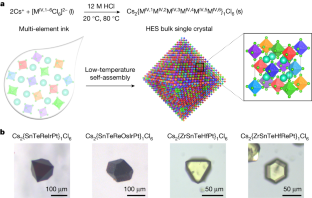2023-10-06アメリカ合衆国・オークリッジ国立研究所(ORNL)

・ ORNL が、NASA との共同プロジェクトで ORNL の新レーザー粉末床溶融結合システムによりルーナーローバーホイールのプロトタイプ(ニッケルベース合金製。幅約 8 インチ(約 20cm)、直径約 20 インチ(約 51cm))の 3D プリント作製に成功。
・ 月の南極の氷層や資源探査に向けて 2024 年に NASA が月面へ送る予定のモバイルロボット、Volatile Investigating Polar Exploration Rober (VIPER)の軽量ホイールが同プロトタイプのモデル。このミッションは、月の水の発生源・分布や、月面生活を支えられる採取量の可能性の把握が目的。
・ ORNL 開発のソフトウェアがホイールデザインを縦の層に「スライス」して 2 本のレーザー間のワークロードのバランスを均等化し、従来と同量のレーザー粉末の使用で生産率を飛躍的に向上させ、積層作業の 50%の高速化を達成した。
・ プロトタイプ作製に使用したシステムは、人間が入れるほどの大きさで、一般的な金属粉末床システムのような段階を経ることなく、大型のオブジェクトを継続して一括で 3D プリント作製できる。
・ ORNL の製造実証施設 (MDF)で作製したプロトタイプホイールは、実際のミッションで使用するものではないが、VIPER の設計仕様で作製。将来のルーナー、マーズローバーでの使用や、大規模構造の部品等の他の宇宙アプリケーション検討前に設計・製造方法評価を追加試験にて実施する予定。
・ 従来製造方法のものと同等の強度を確認できれば、将来のローバーでは 40 時間で製造できるこの3D プリントテッドホイール採用の可能性がある。従来製造方法では不可能な、ホイールを強化する設計を取り込んだ作製方法も検討する。
・ 今回のニッケルベース合金のように、特殊なプリンターでは使用できる材料が限られることが課題。同じ厚さでもアルミ製の VIPER ホイールより 50%重くなる。
・ 積層造形(AD)技術は、製造にかかるエネルギー使用量、廃棄物やリードタイムを削減しながら、複雑なデザインや材料特性のカスタム化を可能にするもの。MDF はこの分野の最前線にて、クリーンエネルギー、輸送や製造部門での多様なアプリケーションに向けた AD 技術開発に 10 年以上携わっている。
・ 本研究には、NASA と米国エネルギー省(DOE) Advanced Materials and Manufacturing Technologies
Office (AMMTO)が資金を提供した。
URL: https://www.ornl.gov/news/researchers-3d-print-moon-rover-wheel-prototype-nasa
<NEDO海外技術情報より>
関連情報
3D Printing and Additive Manufacturing 掲載論文(フルテキスト)
Improved Productivity with Multilaser Rotary Powder Bed Fusion Additive Manufacturing
URL: https://www.liebertpub.com/doi/10.1089/3dp.2022.0288
Abstract
Laser powder bed fusion (LPBF) enables the fabrication of intricate, geometrically complex structures with a sufficiently fine surface finish for many engineering applications with a diversity of available feedstock metals. However, the production rate of LPBF systems is not well suited for mass production in comparison to traditional manufacturing methods. LPBF systems measure their deposition rates in 100’s of grams per hour, while other processes measure in kilograms per hour or even in the case of processes such as forming, stamping, and casting, 100’s of kilograms per hour. To be widely adopted in industry for mass production, LPBF requires a new scalable architecture that enables many orders of magnitude improvement in deposition rate, while maintaining the geometry freedom of additive manufacturing. This article explores concepts that could achieve as much as four orders of magnitude increase in the production rate through the application of (1) rotary table kinematic arrangements; (2) a dramatic number of simultaneously operating lasers; (3) reductions of laser optic size; (4) improved scanning techniques; and (5) an optimization of toroidal build plate size. To theoretically demonstrate the possibilities of production improvements, a productivity analysis is proposed for synchronous reluctance motors with relevance to the electric vehicle industry, given the recent increase in the diversity of printable soft magnetic alloys. The analysis provides insights into the impact of the architecture and process parameters necessary to optimize rotary powder bed fusion for mass production.



